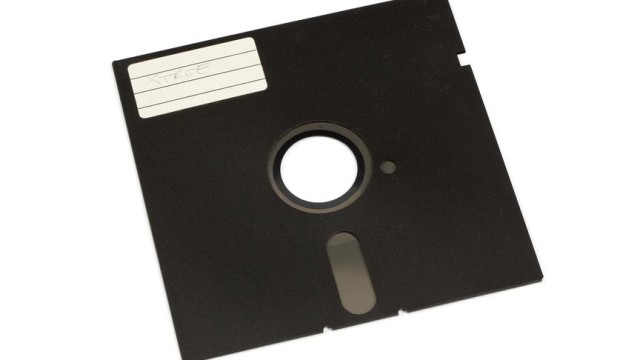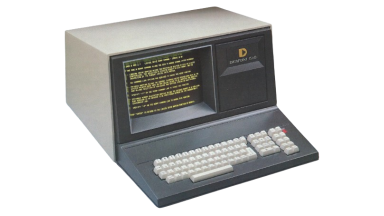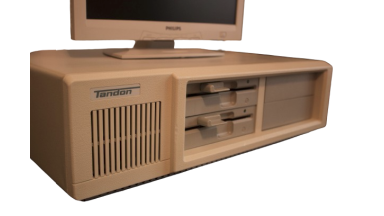
Diskette 5¼" DD
Company: Tandon
Launched: 1978
Capacity: 360 KiB
This development led to an increase in capacity and commercial standardization.
Personal computers equipped width Diskette 5¼" DD
Manufacturer: CTC
Launches: 1982
Manufactured in US
CPU:
Zilog Z80A
Memory: 64 KB ~ 128 KB
Support: Diskette 5¼" DD
Hard drive:
10 MB
Operating system: CP/M
Manufacturer: Tandon
Launches: 1986
Manufactured in US
CPU:
Intel 8086
@ 8MHz
Memory: 256 KB
Support: Diskette 5¼" DD
Support B: Diskette 5¼" DD
Hard drive:
10 MB
Operating system: MS-DOS 2.11
Manufacturer: Amstrad
Launches: 1986
CPU:
Intel 8086
@ 8MHz
Memory: 512 KB ~ 640 KB
Support: Diskette 5¼" DD
Support B: Diskette 5¼" DD
Hard drive:
None
Operating system: MS-DOS 3.2
It could be purchased with a color (CM) or monochrome (MM) monitor.
And with floppy disk drives for low-density (PC1512SD) or double-density (PC1512DD) disks.
This computer initially didn't have a hard drive, but one could be included. Its floppy disk drives could also be replaced with high-density ones.
The keyboard:
When Amstrad manufactured the PC1512 in 1986, it was careful to avoid any conflict with IBM and made sure not to infringe any of IBM's patents on the IBM PC. In fact, there were very few patents registered other than the keyboard interface.
Therefore, Amstrad designed a new keyboard interface that was quite different (and therefore incompatible) with the IBM interface. The connector and protocols were different, so an Amstrad keyboard cannot be used (even with an adapter) with an IBM PC, or vice versa.
The proprietary keyboard interface was used on all machines in the 1000, 2000, 3000 and 4000 series. Later (from the 5000 series onwards), Amstrad followed what had become common practice and switched to the IBM PS/2 keyboard interface.
Manufacturer: Inves
Launches: 1988
Manufactured in ES
CPU:
Intel 8088
@ 10MHz
Memory: 640 KB
Support: Diskette 5¼" DD
Hard drive:
20 MB
Operating system: MS-DOS



